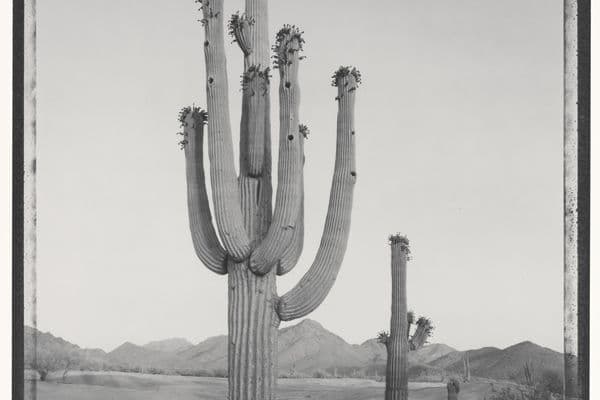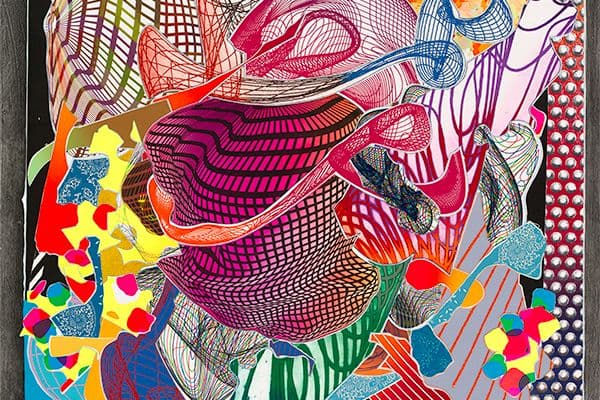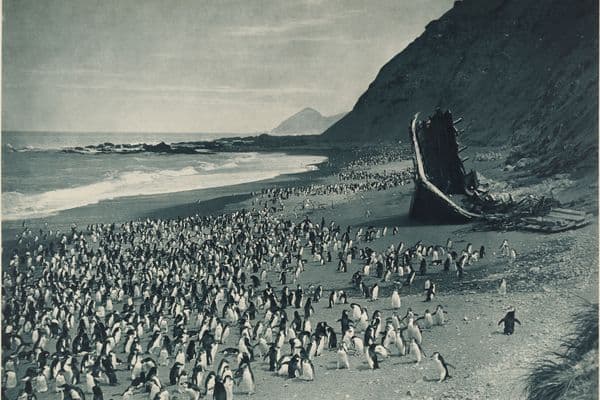Photodeath
6 Apr 1991 – 30 Jun 1991

W. Eugene Smith, (Spanish wake, "Spanish Village" series): from "A portfolio of ten photographs" [Ed.21/25], 1950, National Gallery of Australia, Kamberri/Canberra, Purchased 1978.
Exhibition Pamphlet Essay
'Undoubtedly it is the knowledge of death. that gives the strongest impulse to philosophical reflection and metaphysical explanations of the world.'
Death is an ever present preoccupation of humankind. It has always been a significant subject in art and its relationship with photography has been particularly close. Much of the theory of photography has been based on the idea of the camera as a weapon — photographic 'shots', for instance, have been compared with gun shots, and the procedure of taking a photograph has been compared to the way in which some weapons are loaded, aimed and shot. In her book On Photography, Susan Sontag described the camera as predatory, and likened the photographer's quest for subjects to the search for exotic fauna on safari. Even the speed and finality with which a camera captures its subject can be seen as a kind of death, suggested by its visual entrapment of the subject's 'soul' or of the 'caught' moment that can never be revived.
The exploration of death within art may also be a device for denying the inevitability of death. Paradoxically, an awareness of the certainty of death is a characteristic that distinguishes humankind from the rest of the animal world. In modern times, because many people have lost a belief in the immortality of the soul, death represents a new kind of exigency. A preoccupation with death is considered morbid, whereas ignoring its reality is regarded as healthy. The common attitude to death involves flight and avoidance; funeral customs such as embalming and enclosing bodies in burial caskets that are designed to delay decay testify practically to this viewpoint. Such customs are developed as part of a vast cultural illusion intended to deny or at least make more palatable the harsh reality of death. This attitude is symptomatic of Arnulf Rainer's works, where Rainer has painted over photographs of death masks with energetic strokes as if he is attempting to invigorate the victims with new life.
Photography plays a major role in the documentation of events. This is a natural outcome of the medium's capacity to provide a reliable record of an incident or place, and as such includes the gruesome sights of war, accidents and natural disasters. There have been many discussions of the gradual anaesthetization of our senses through excessive exposure to this kind of imagery. The media presents a plethora of images depicting famine victims, bodies being carried out of earthquake zones and, more recently, the ‘surgical precision' of the Gulf War bombings and their aftermath. Photography and film are the mediums which most commonly depict the reality of such morbid events. In the past, scenes of conflict were documented solely by painters and graphic artists (Francisco Goya's painting The shootings on May 3rd 1808, for instance, records the Spanish insurrection against French occupation); today, photographic images provide the most vivid visual documents, as exemplified by the Eddie Adams photograph South Vietnamese National Police Chief Brigadier General Ngyuen Ngoc Loan executes a Viet Cong officer with a single pistol shot in the head, Saigon I February 1968.
More memorable than the moving images of film and television broadcasts, still photographs present a finite slice of time rather than a constant stream of images. Such photographs can be kept and looked at again over time. The dimension of time is one of the most important aspects of photography: through its capacity to record a moment in time, the camera documents and highlights life processes and reminds us of our mortality. Philosopher Roland Barthes, in his influential book Camera Lucida, ponders over an old photograph of his deceased mother, which the reader is never shown. The image, which he calls the 'Winter Garden' photograph, becomes the only photograph of which he is aware — all photographs form a labyrinth and 'at the centre of this Labyrinth [he] would find nothing but this sole picture'. This memento of his mother's death has become evidence of his own mortality — he 'could do no more than await [his] total, undialectical death'.
Time is suspended in the work of Jacky Redgate. She found old negatives in the possession of her relatives in England and reprinted them to construct a narrative titled A portrait chronicle of photographs, Photographer Unknown, England 1953—62. The anonymity of the original photographer is the crux of the series; the images are presented through eyes that were familiar to the subjects but are now unknown. By selecting images taken by an unknown photographer and then printing them large with the intention of presenting them in an art gallery, the artist has turned private scenes into public statements. The series represents two forms of death: the 'death of the author', represented by the anonymity of the photographer (the series has been appropriated by Redgate for her own purposes); and the death suggested by the life passages of a family.
The progression from one phase to the next of a human life has often been compared to a death. Christian Boltanski depicts actual death to represent the loss of childhood. In El caso, he includes photographs of child victims as if their loss of innocence constitutes real death. Graeme Hare's photographs nostalgically recollect childhood's uncomplicated years. Drowning boy mars that memory, however, and, like Boltanski's works, mourns a loss of innocence. Regardless of the documentary characteristics of photography, contemporary works which deal with the subject of death are often ambiguous in their focus and intent, and are likely to be bound by mystery. This is a curious reversal of the attitudes that one would expect in a century which has seen a greater emphasis on understanding and controlling nature than ever before.
Until the late nineteenth century, death in the Western world was treated as a public event. Since the early twentieth century, death has become increasingly private in contrast to a conspicuously more public treatment of sexuality. In recent photographs, Robert Mapplethorpe has exploited both: his last works, produced when he was faced with his own mortality, incorporate the sensual subject matter that characterizes his earlier work with the starkness and solitude of death. 'Only death, or the relation to death', writes Martin Heidegger, 'brings such isolation, for my death is the only event in my life which is uniquely mine'. Both art and literature have frequently treated death and sexuality as violent transgressions: in the writings of the Marquis de Sade death and violence merge with desire; and plays of the baroque period often intensified the emotion of love by relating it to death. Similarly, segments of an emaciated youth 'dismembered' by the camera in Bill Henson's Untitled 1979-80 recall past representations of Saint Sebastian, who, on the verge of death was revived by the passion of a widow before his final, violent demise.
In paintings, human mortality has often been conveyed in a symbolic way, especially as still-life compositions called 'nature morte' or 'vanitas'. In one of the traditions of Dutch seventeenth-century painting, still lifes depicting skulls, hourglasses and decaying food and plants reminded the viewer of the vanities of earthly pleasures. Some nineteenth-century photographers continued this tradition by depicting domestic scenes with fully ripened and rotting fruit and flowers. Recent works based on this theme are often concerned with the ironic use of an historical vocabulary in a contemporary medium. The series Natura Morta by Christine Cornish makes reference to earlier European still-life painting. However, rather than using the still life as a moral reminder, Cornish explores the relationship of the described object with reality — that is, investigating whether a photograph can function as a true representation of the subject. Cornish uses the visual tradition of trompe-l'oeil so that it is difficult to know whether we are looking at actual objects or images altered by the artist's hand.
'A specific photograph is never separated from its referent', states Roland Barthes; therefore it is difficult for a viewer to understand or appreciate the medium for its own worth, being always drawn back to the actual event or object depicted in the photograph. It is this aspect of photography that has relevance to the recording of family life.
Photographs of dead relatives and friends preserved in family albums become substitutes for the presence of those people and help to alleviate some of the anxiety and sense of loss prompted by their absences. Similarly, in documenting Paris at the turn of the century, Eugène Atget was creating souvenirs of a disappearing lifestyle — mementos that create the illusion of a past time while emphasizing the transitory nature of life. 'All photographs', according to Susan Sontag, 'are memento mori. To take a photograph is to participate in another person's mortality ... Precisely by slicing out this moment and freezing it, all photographs testify to time's relentless melt.'
Kate Davidson











